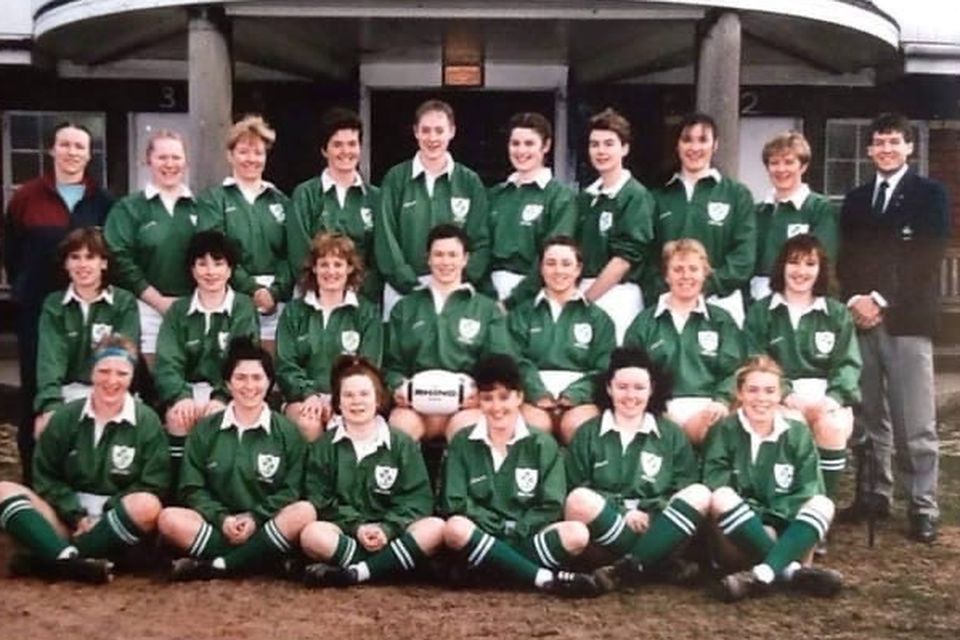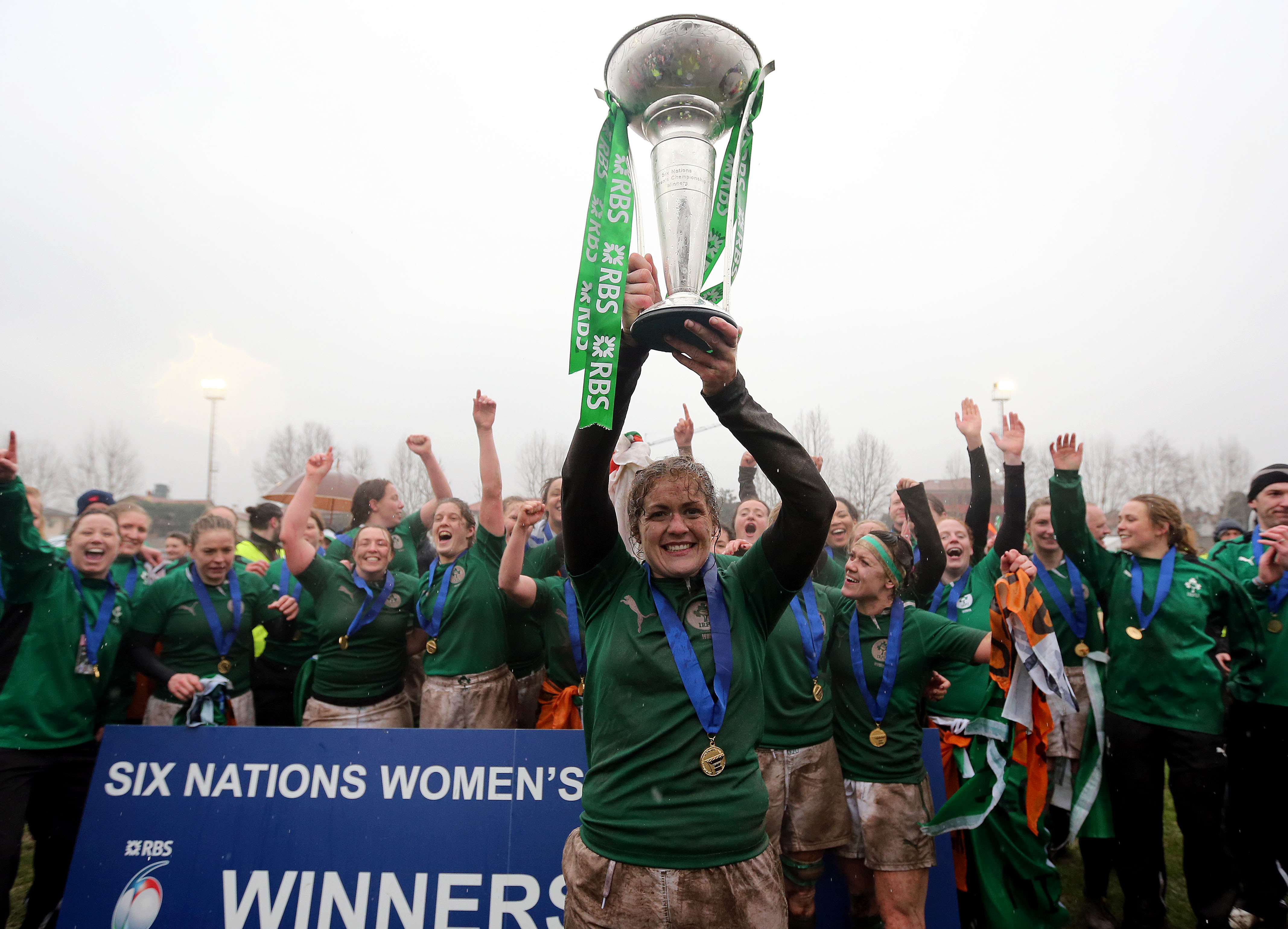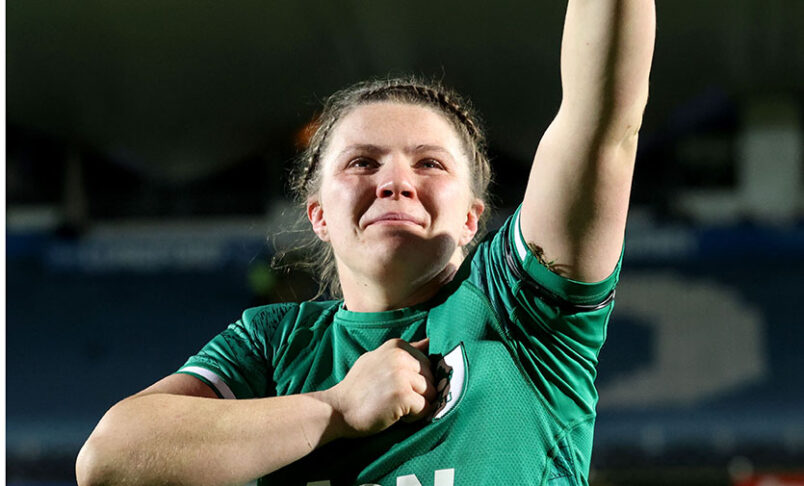The Irish phoenix rises
An historic victory over the Black Ferns of New Zealand

5am on a miserable Monday morning, I found myself sobbing uncontrollably and hugging my television. I get that it makes me sound a little bit daft, but I can’t describe how much this matters. Context is key.
The last decade of women’s rugby in Ireland has been tough. Part of me thinks it always will be, but the women’s international side went through it’s toughest period yet. The side went from winning grand slams and a World Cup semi final, to not even qualifying for a World Cup and a Six Nations wooden spoon.
The result on Monday in itself, beating the world champions, is huge. In the context of the journey this side has endured, it is absolutely gargantuan. So I’d like to take you on that journey, tell the story and share with you what I think it all means.
Eager beginnings
Back in 1993, Ireland’s women’s international rugby union side played their first ever game against Scotland. In a friendly match at Raeburn Park, on Valentine’s day, captain Jill Henderson lead us to a 10 - 0 victory. It was a year and a day before we played our first ever home game in Ravenhill.

In the early days, the women’s side fell under their own union, the IWRFU and it wouldn’t be until the end of the Celtic Tiger that the IRFU would fully subsume the women’s game in 2008.
Golden era
Within five years of coming under the IRFU umbrella and 20 years after their first international game, the women would win a grand slam in the six nations under the safe hands of Philip Doyle. On the most miserable of days in Italy, baked in mud and with borderline hypothermia, Fiona Coghlan’s side lifted the Six Nations trophy for the first time.

Now, I want to be careful about how we reminisce about the ‘glory days’ of women’s rugby in Ireland. I’d be doing it a disservice to pretend it was something it wasn’t. The days of beating the likes of England and France, were days of very amateur rugby. Players paid their own way. The union didn’t resource the team much at all. It was, essentially, an all star club team. That’s not to say they weren’t incredible players, but that the international side was as amateur as can be. They had a coach, not a coaching team. They didn’t have S&C, they didn’t watch much film of their opposition, they certainly didn’t have nutritionists or specialist coaches.
Travel for away games was often done on a shoestring, to the detriment of performance. Most notable was the trip to Pau to play France where the team flew to Paris, got stuck in rush hour traffic, missed a train and had to take an overnight train via Bordeaux. A trip where there was nowhere suitable to sleep, especially not for athletes competing at international level the next day. They got three hours sleep in their hotel before running out against their opponents. Not the conditions a well supported, respected and resourced team would ever face.
When other unions began to really resource their women’s side and treat it with the respect it deserves, Ireland fell behind, and just like that, the glory days were a thing of the past. The IRFU were happy for the women to play, but not in a way that showed real ambition or a hunger for success. In a way that it felt like a tick box exercise, as though just having a women’s team was enough, and as a result the other unions drifted away from us.
The forgotten times
The really important point, that is often forgotten, is that during the low times, the players dedication, determination and ambition was never an issue. There has always been women deeply proud to pull on an Irish jersey, to represent their country and to play at the top level available to them. The bit that was missing was a union to match that approach. As a result, during the bad days we had players come and go. They would arrive all fresh faced and eager, only to see that they had to climb obstacle after obstacle, their path forever hindered and greatness, through no fault of their own, out of reach.
And this is the bit that truly makes me sad. I can’t help but think about those players that only existed in that gap of success. The ones that never had the resourcing or support. What could have become of them? What could they have achieved?
I look at Ciara Griffin. An outstanding player and leader, the ultimate grafter and team player. A player always willing to do the hard yards and the thankless work. Truly one of the best we have ever had. Griffin debuted for Ireland in 2016, becoming captain in 2018. Griffin was the Irish captain when Ireland kept tipping along, watching on as the RFU and the FFR started to get really ambitious. Without a doubt, she gave her all, I’m sure more than anyone can ever truly grasp, and yet success petered away. Griffin was without a doubt a true leader, that in another era would be lifting trophies and celebrating enormous victories.

As that true leader, Griffin was instrumental in eventually calling out the IRFU, very publicly in January 2021. It has to be understood that this action was a catalyst for the success we see now. It was not an easy thing to do and was not well received by the IRFU, including by the recently departed high performance director David Nucifora. Griffin would eventually retire early. I can’t help but feel that she, and many of those who played during that phase of the Irish team, were incredibly let down. Their potential was so much greater than their success.
Similarly, Anna Caplice, another player who’s international career spanned that 2016-2021 period, was an incredible international athlete. Nobody, and I mean nobody had a passion for that jersey quite like Caplice. An incredible flanker, first to every ruck and hitting twice as many rucks as most, belting out Amhráin na bhFiann and Irelands call with more intensity than a hurricane. Caplice played in an era where her abilities would never truly be harnessed. In fact, her passion for the jersey and commitment to the team was largely met with apathy by the union, a situation that must have been truly infuriating for the Cork woman. Where her male counterparts were backed to the hilt and were treated like heroes, Caplice’s drive and dedication appeared to be considered problematic, simply because she and many of her then team mates expected better, and rightly so.

Following the retirement of Griffin, the captaincy was handed to a then relatively inexperienced Nichola Fryday. I have to say, of all those let down by the IRFU, it was Fryday who was let down the most. After the letter was released, calling out the IRFU, the media attention the game got and specifically the scrutiny vastly intensified. Rather than the IRFU dealing with it and responding accordingly, Fryday was left to manage the media on ocassion. She was thrust into the spotlight and forced to try quell the furore of numerous contraversies and expected to defend those that were letting her and her side down as they papered over cracks and gave mere lip service to the dedicated athletes who pulled on the jersey. Fryday, like her predescessor, retired from international rugby early as a result of what can only be described as ridiculous pressure and unmanageable expectations.

Reflection and lessons
I think it’s really important that as we watch a now younger and better resourced team take on Goliaths and beat them, that we acknowledge those that went before them. There are many more names that I could mention that grafted in green and were let down by those responsible for supporting them. As those players battled to overcome obstacles that the union should have actively sought to remove, they did so with just as much dedication and ambition as every woman that beat the Black Ferns on Monday morning. Unfortunately many never got to experience such elation, through no fault of their own, but it doesn’t mean that what they gave was any less valuable or important. It is because of those that fought for better that we are now starting to see success again.
It is now vital that the IRFU learn from the mistakes of the past, rather than forget them. All too easily, we could fall behind again. All it takes is the slightest shift in priorities within the union, to dampen the growth we are seeing now. Without true commitment to excellence, through the development of a functional pathway and the backing of a full annual club structure for the top elite athletes, we could very easily continue to lose players to other unions domestic set ups and to other sports.
Now is the time to leverage the little success we have, not the time to take the foot off the gas and decide we’ve done ‘enough’. There is no ‘enough’ in the mens game, the aim is to win World Cups. This small period of success, albeit an incredible achievement, should be the catalyst for change, not considered the end result.
To all that have gone before, this is just as much your victory too.
The Irish Women’s Rugby Supporters Club